For those who have noticed a dearth of notes, let me say that I only post a note when I learn something, and there is nothing like a long cold winter to preserve one’s state of ignorance.
Last week I learned something, actually, a couple of somethings.
I was trying to get a picture of fox squirrel. I’ve never gotten a photograph of a fox squirrel that satisfied me. Usually, I’m too far away.
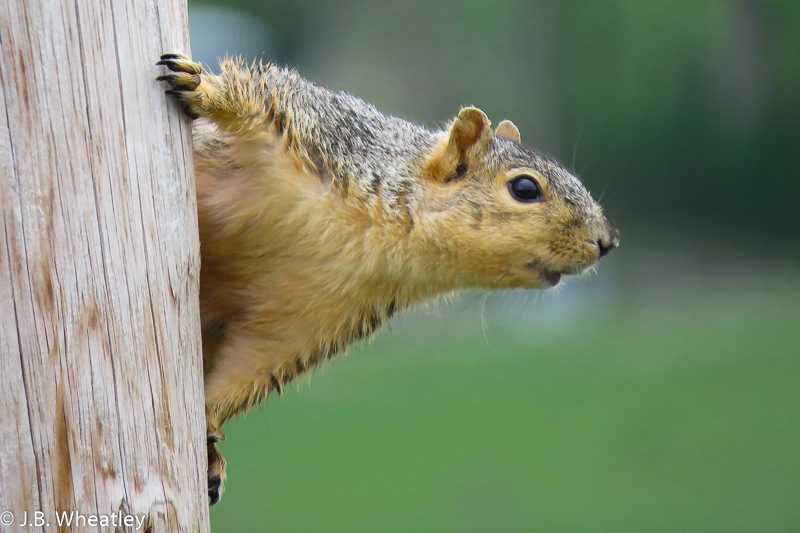
I still don’t have a good shot. This fox squirrel was a good 100 yards from the nearest woods feeding in a cornfield. As soon as I stopped the car, he took off like the very Furies were chasing him, and as he zipped through the cornfield, he was escorted by two small dun-colored birds.
They were not Furies; they were Horned Larks, another species I’ve never gotten a decent photograph of.
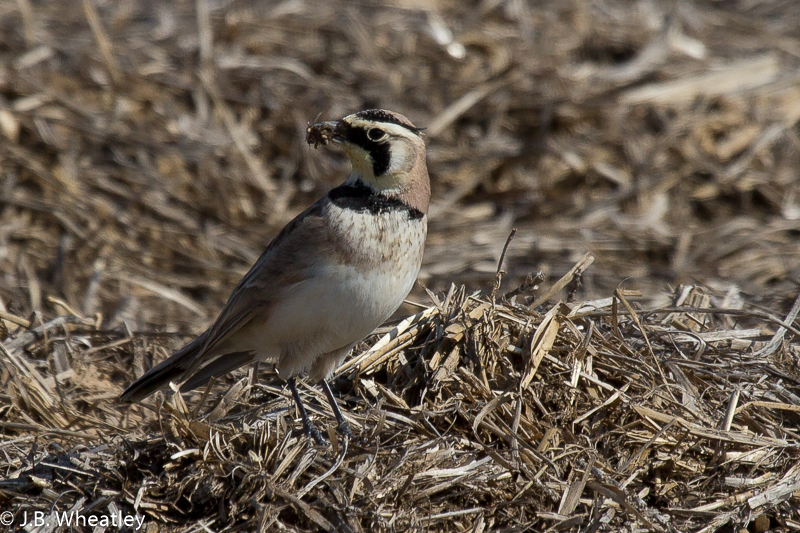
Handsome little birds up close, but very difficult to get up close to. A few springs ago I found a Horned Lark feeding on the lawn of a local church. I got a few shots, but they were all at a very great distance, and I had to crop them by more than 50%.
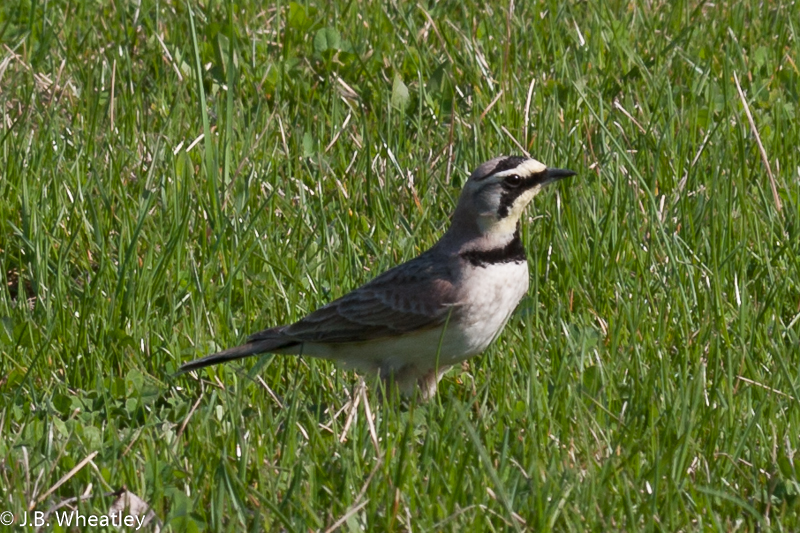
During the winter, I often find Horned Larks in large open fields along the side of the road. They are particularly fond of freshly spread manure. Again, however, they do not tend to allow a close approach.
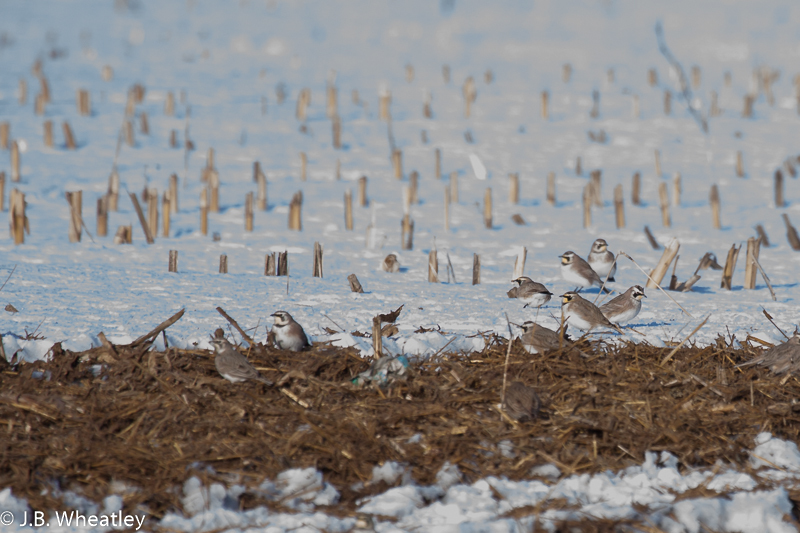
In late winter/early spring I sometimes see the males in their towering (up to 800 feet) nuptial displays.1 I have never gotten a picture though–800 feet is pretty far away.
Horned Larks are a fairly common bird, although few people are familiar with them.
They are also international. In various sub-species, they occur throughout northern North American and Eurasia. One Eurasian sub-species is called Przewalski’s Lark.
That piqued my interest, and I learned my first something: who was Przewalski.
Przewalski was Nikolay Przehavalsky.2
When I was a kid, my encyclopedia, on the mammal page, had a picture of the world’s only living truly wild horse: Przewalski’s Horse.3 Przewalski’s Horse was discovered by Nikolay Przehavalsky, a one-man Belarussian equivalent of Lewis (or Clark). He conducted several difficult expeditions to explore China and Central Asia in the late nineteenth century.4 He was also a bigot.5

Back to the larks. Horned Larks are inconspicuous at best, and in a dun-colored stubble field, they can be dang near invisible.
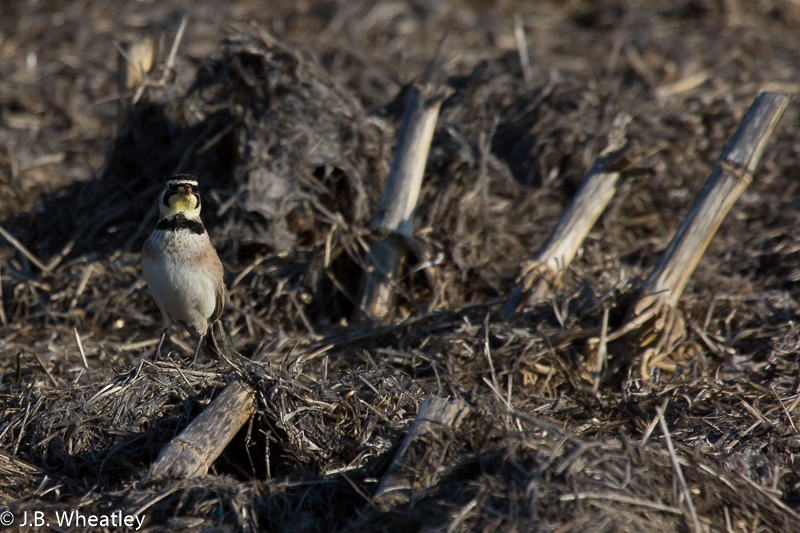
They tend to move rapidly in fits and jerks, punctuated by pauses when they stand very tall and look about themselves.
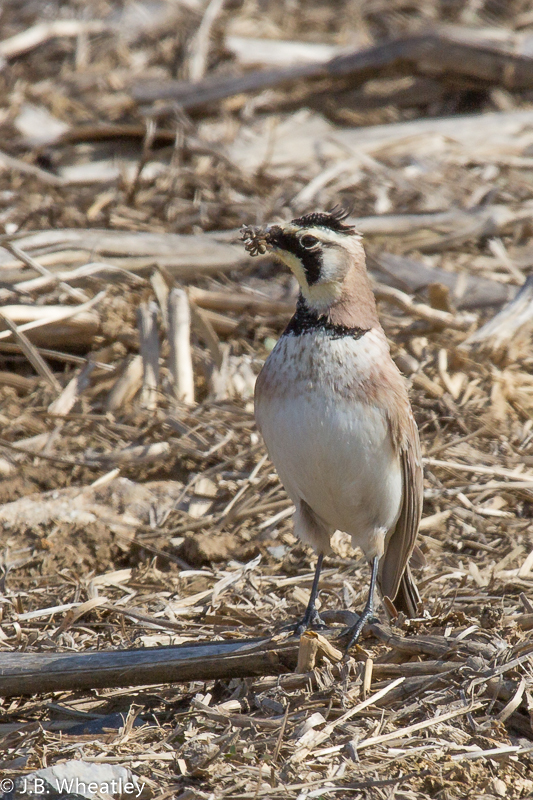
They don’t hop, they walk, or more often, run in short little dashes.
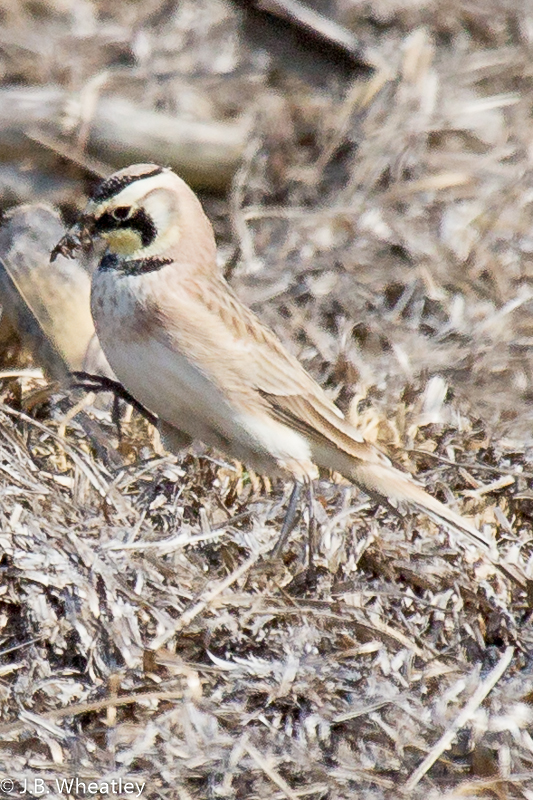
By the way, this is the Canadian Alouette haussecol, and seeing as the horrific children’s song “Alouette” probably originated in French Canada (I didn’t know that), these are probably the little birds that millions of francophone children have happily sung about denuding, one body part at a time–head, beak, eyes, neck, wings, feet, tail, and back–in that ditty.((Helene Plouffe, “Alouette!“, Historica Canada; last edited 21 Jan. 2014 [accessed 13 Apr. 2014] )) As the refrain says:
Alouette, gentille alouette,
Alouette, je te plumerai.((Lark, charming lark, Lark I’m going to pluck you.))
So what did I learn about Horned Larks?
Okay, I only saw the female once, and very briefly.

While I was watching the male, I thought I heard a high-pitched calling from farther out in the field–sounded like young birds calling for food. So, I’ve got peeping birds, birds harassing a squirrel, a female staying out of sight. Is there a nest? I consulted Cornell’s website, and learned that “Adult Horned Larks eat primarily weed and grass seeds, but they feed insects to their young” (emphasis mine).
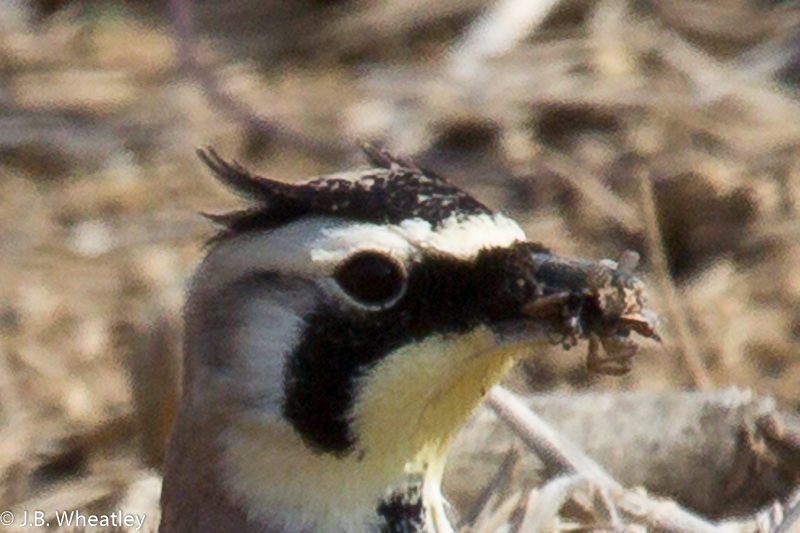
I didn’t know that.
- John K. Terres, The Audubon Society Encyclopedia of North American Birds, (Alfred A. Knopf, New York, NY, 1980). pp. 585-6.
- One’s a Polish spelling, the other–isn’t. I don’t remember which.
- Sadly, Przewalski’s Horse was exterminated in the wild, but they are making a comeback through captive breeding.
- According to Wikipedia, he was an extraordinary explorer, succeeding on one expedition even though “beset with…poor quality camels.” Don’t you hate it when that happens?
- In fairness, ethnic bigotry was endemic among Europeans of that age. That said, Przehavalsky held particularly low, and rudely expressed, opinions of non-European cultures and peoples.
